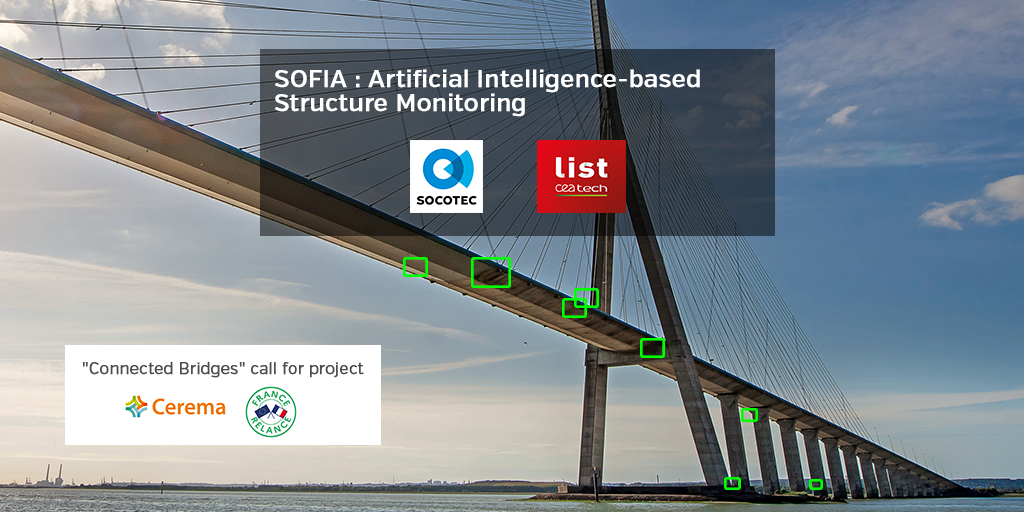
Bridges are critical components of road networks that play a strategic role in our economy and society1. France has around 200,000 bridges2. According to a 2019 report by the French Senate’s Infrastructure Development and Sustainability Committee, the nation’s bridges are getting old3. To keep people safe and roads open, the maintenance of these aging bridges must be optimised.
In December 2020, the French government issued a call for projects to develop solutions for connected bridges1. Managed by CEREMA, a government agency that advises on infrastructure development and sustainability issues, the call for projects is financed by France’s economic recovery plan. The objective is to come up with new tools and methods for safer, more effective, and cheaper bridge maintenance.
The SOFIA project, led by SOCOTEC, an independent trusted third party that provides testing, inspection, and certification services to the construction and civil engineering industries, was selected by CEREMA. The project will integrate SOCOTEC’s inspection tools with artificial intelligence. Thanks to its strong expertise in machine learning and artificial intelligence for vision, CEA-List was the natural partner for SOCOTEC.
The main innovation in this project lies in the algorithms. No additional instrumentation will be needed, and SOCOTEC can continue to use its common inspection techniques. A powerful vision system based on advanced detection and recognition algorithms will automatically detect and characterize defects photographed by inspectors on site. More than 100,000 images from SOCOTEC’s database will be used to train the system. The technology developed will guide inspectors as they enter data into their inspection reports and calculate a rating for the condition of the structure being inspected.
SOCOTEC Infrastructure has a database with more than 100,000 photographs from 2,500 inspection reports characterizing 250 types of defects. This database will be used as training data for the machine vision models. After this initial training, the AI-based models will continue to learn from subsequent inspections.
Data from past inspections will be used to produce more standardized inspection reports. The experience gained with each inspection will make future assessments of the condition of bridges more reliable—the ultimate goal. Inspectors will be able to do their jobs faster and more easily while producing more reliable inspection reports. And they will not need to change the way they carry out their visual inspections.
At the end of the project, the new features will be integrated into SOCOTEC’s inspection software. A decision assistance module will also be included to analyse and summarise the information entered and to generate the inspection report. As AI and computer vision will make it easier to flag defects that require further analysis, SOCOTEC’s inspections will gain in accuracy.
Looking ahead, SOCOTEC will reap additional benefits from this new solution by using AI to mine the massive amounts of inspection data collected for predictive maintenance insights.
Contact: Patrick Sayd and Arnaud De Pracomtal
[1] CEREMA is a government agency that advises on infrastructure development and sustainability issues (https://www.cerema.fr/fr/pontsconnectes).
[2] Civil engineering structures in France: French Society of Engineers and Scientists (IESF) Construction and Civil Engineering Committee Report on Monitoring and Maintenance, December 2018 (https://www.iesf.fr/offres/doc_inline_src/752/Ponts-en-France-AvisIESF.pdf).
[3] French Senate Development and Sustainability Committee Report, June 2019 (https://www.senat.fr/rap/r18-609/r18-6091.pdf).